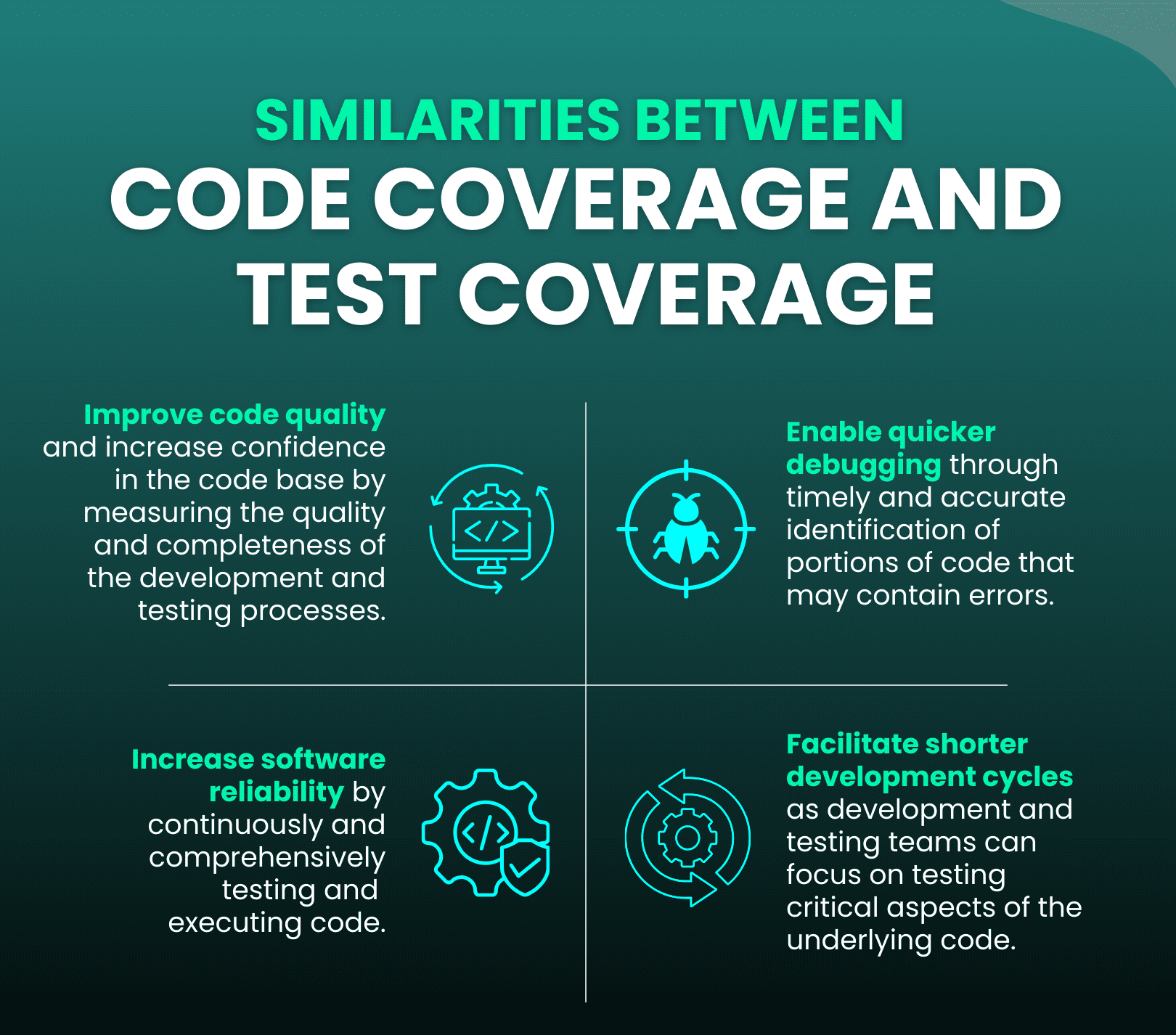Code Coverage vs. Test Coverage

Today, every software development team strives to improve code quality and minimize the presence of bugs via test automation. While doing this, they are bound to come across the terms code coverage and test coverage. Code coverage measures the extent to which a set of code has been executed by tests. Test coverage measures the extent to which a test suite exercises the features and functionalities of an application.
Code Coverage vs. Test Coverage: Key Differences
In the world of automated and manual testing, code coverage and test coverage are frequently heard and used terms. So, what is code coverage and what is test coverage? And what is the difference between them? In essence, code coverage testing signifies the ratio of code executed during testing. On the other hand, test coverage states the extent to which software tests cover requirements or functionality. Let's look at their top differences:
| Attribute | Code Coverage | Test Coverage |
|---|---|---|
| Metric | Code coverage is a quantitative metric that can be expressed numerically. It states the amount of code tested – either in number or by percentage. | Test coverage is a qualitative metric that reveals the extent to which business requirements have been tested. It indicates the quality and completeness of the testing process and cannot be expressed numerically. |
| Approach | Code coverage testing is a white box testing approach that verifies the internal workings of any software application. Testers choose an internal perspective of the system to design test cases and determine the expected outputs. | Test coverage is a black box testing approach that examines any software application’s external behavior or functionality. It focuses on validating various software specifications under test but does not verify how it does it. |
| Testing Stages | Code coverage is critical in the early stages of the software development lifecycle. For instance, during the development stage, code coverage helps ensure the testing all lines of code. | Test coverage is a crucial component in the late stages of the software development lifecycle. It monitors the number of executed tests and ensures maximum coverage of the requirements outlined in the test document. |
| Codebase | Code coverage only measures the execution of code. It does not consider other factors, such as the tests quality or the system’s overall design. Hence, it only works for products with a simple code base. | Test coverage encompasses the entire scope of testing, which includes not only verifying code execution but also validating the quality and effectiveness of the tests. |
| Examines | Code coverage examines what areas of code have or have not been executed and accurately measures the percentage of code executed. | Test coverage examines how many of the tested features are covered by the test, which is a good risk indicator. |
| Testing Level | Code coverage testing is generally performed at the unit testing level. It helps testers decide which tests to include and whether there are enough tests in the unit test suite. | Test coverage is usually done during integration, system, or acceptance tests when all software modules are integrated. |
| Implementation | Since code coverage is concerned with the internal workings of the code, it necessitates substantial knowledge of the code. | Since test coverage only checks for the functionality or behavior of the software, it does not demand in-depth technical knowledge of the code under test. |
What Are the Similarities Between Code Coverage and Test Coverage?
Code coverage and test coverage might seem like totally different concepts. For example, code coverage showcases areas of code that have been executed, and test coverage highlights the risks that have been examined. However, the truth is that they are related and share many similarities.

How ACCELQ Helps Maximize Code Coverage and Test Coverage
ACCELQ paves the way for comprehensive test coverage and code coverage testing. An advanced AI-powered test automation platform, ACCELQ allows business process-focused automation across the tech stack. Being codeless, it empowers testers to check and validate various software specifications and maximize code coverage testing.
Using ACCELQ unified, teams can also conduct end-to-end unit, integration, and system testing and fulfill all their testing needs. Automated capabilities ensure that every line of code is executed and checked for bugs and defects. They also verify that the software system has been thoroughly tested and that any issues have been identified and corrected.
ACCELQ also helps deliver quantitative metrics, assisting developers in gauging the nature and health of their codebase. The platform improves code base efficiency by identifying and removing risky or useless code. Since it enables continuous testing, it monitors the number of executed tests while ensuring maximum code coverage in software testing of the requirements outlined.
With ACCELQ's comprehensive test case design, testers can conduct an in-depth assessment of the application's operability. By reducing the risk of new defects or weaknesses, the platform helps build product confidence and ensures the evaluation of all aspects of the product.
Adopt ACCELQ today to make code coverage testing and test coverage an integral part of your enterprise testing strategy. Get in touch to learn more.
Discover More
 Empowering Manual Testers with Codeless Automation
Empowering Manual Testers with Codeless Automation
Empowering Manual Testers with Codeless Automation
 Role of Test Orchestration in the Test Automation Process
Role of Test Orchestration in the Test Automation Process
































